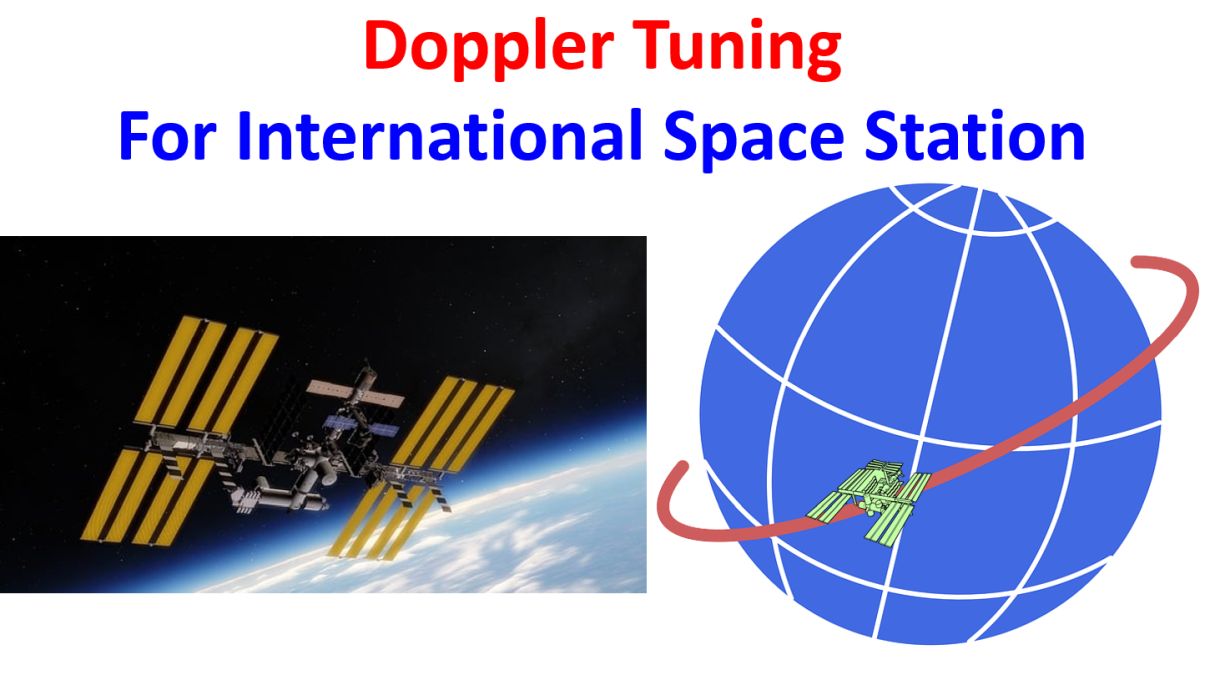Doppler Tuning for International Space Station
Doppler Tuning for International Space Station
International Space Station has a low earth orbit and unlike the geostationary satellites, needs orbit tracking if you have to either contact astronauts on board or work through the repeaters on board. You can track International Space Station as well as other amateur radio satellites using the N2YO website or any of the many which give satellite position information. When I checked now, the International Space Station is above the horizon for me, at this moment! We will see why Doppler tuning is needed for contacts with non-geostationary satellites like the International Space Station.

Currently there are two active repeaters on the International Space Station. One is the digipeater with uplink on 145.825 MHz and downlink on same frequency. The other one is the voice repeater with uplink on 145.990 MHz and downlink on 437.800 MHz. Note that it is a crossband repeater with uplink on VHF and downlink on UHF. When the non-geostationary satellites rise above the horizon, they are moving towards you. There is an apparent increase in frequency as it approaches you. Once it crosses the maximum point, during the particular pass, then it is moving away from you so that there is an apparent decrease in frequency. That is why you need Doppler tuning for successful contact to or through the International Space Station.
Doppler tuning is more important when the satellite will rise quite above the horizon and have a long pass time. For example, the pass which I noticed when I started writing this was having a maximum elevation of 34 degrees. But the next pass which is coming in another one and half hours is just 7 degrees. That pass will be very short and there may not be much need for Doppler tuning as the total shift in frequency during the pass will be less. But as that pass will be just above the horizon, the distance from me will be over 2000 km and I will need a very strong uplink signal and a high gain antenna to communicate, within the short time available.
In the other pass with occurred when I started writing, with 34 degrees maximum elevation, there will be more time for communication and the International Space Station will come within 1000 km when it is nearest. But in the beginning of the pass, the Doppler shift will be upwards and you have to tune upwards above the frequency given and when it moves away from you, you have to tune downwards. Usual method is to store frequencies in memory with steps of the minimum tuning frequency step of your radio and switch memory when the signal goes out of frequency.
Start with the higher frequency when the satellite appears above the horizon and tune down as it rises up. AH6RH has given a chart for setting the frequencies in both the VHF and UHF channels. It starts with 5 kHz above on VHF and 10 kHz above on UHF. In middle three steps, the VHF frequency is same as the base frequency while UHF frequency comes down in steps of 5 kHz. Last memory channel is programmed 5 kHz below for VHF and 10 kHz below for UHF. PL tone of 67.0 Hz is needed for the uplink. There are other step wise tuning schemes also available on the web.
In passes above 60 degrees, the International Space Station comes within 400 km at the nearest position and it is possible to communicate with relatively low powers. But as the relative velocities towards you and away from you are more, Doppler tuning is a must to have good contacts. Yet the duration is more and chance for a contact higher if you use Doppler tuning.
Modern expensive radios have automatic Doppler tuning, which is often beyond the reach of an average radio amateur, at least in this region. In addition to this, if you can invest in dual-band high-gain cross-yagi antenna, elevation-azimuth rotator with controller and full duplex radio along with Doppler correction, that will be a dream for most of us.